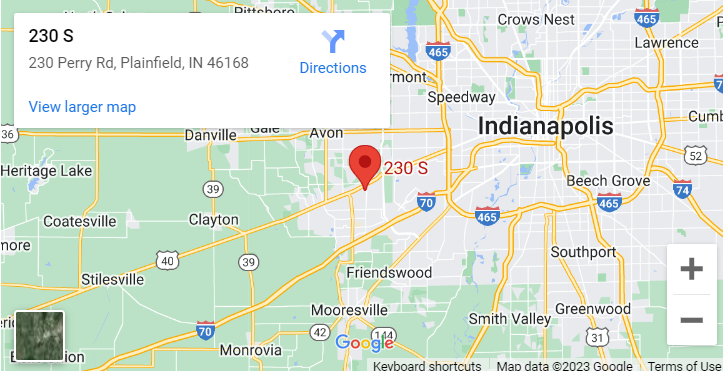
This screenshot is just one example: The IT systems of around 40 National Health System hospitals across the UK were affected by this ransomware attack. Non-emergency operations have been suspended and ambulances are being diverted as a result of the infection. Cybersecurity experts have long used the phrase “where bits and bytes meet flesh and blood,” which signifies a cyberattack in which someone is physically harmed.
Mikko Hypponen, chief research officer at the Helsinki-based cybersecurity company F-Secure, called the attack “the biggest ransomware outbreak in history.” This is a cyber pandemic caused by a ransomware weapon of mass destruction. In the Jan 3 issue of CyberheistNews, we predicted that 2017 would be the year where we’d see a ransomworm like this. Unfortunately, it’s here.
Banks, Trains and Automobiles
Hundreds of thousands of machines are infected worldwide, including FedEx Corp, Renault, Nissan, the German Railways, Russian banks, gas stations in China, and Spanish telecommunications firm Telefonica (which reported 85% of their systems being down as a result of the cyberattack), and in a case of poetic justice, Russia seems to have been hit the hardest up to now. The source is Kaspersky’s Securelist, note that this is just the early days, and their visibility is likely limited.

The strain is called “Wana Decrypt0r” which asks $300 from victims to decrypt their computers. This monster has infected hundreds of thousands of systems in more than 150 countries. Monday morning when people get back to work, these numbers will only go up. Check out an early animated map created by the NYTimes.
Here is an infection map based on data from MalwareTech.com:

…and the Wall Street Journal also created an InfoGraphic explaining the spread of Wana which is nice to show to management when you ask for more IT security budget to train your users – which would prevent this whole mess.

Bleepingcomputer said: “Whoever is behind this ransomware has invested heavy resources into Wana Decrypt0r’s operations. In the few hours this ransomware has been active, it has made many high-profile victims all over the world. “Affected machines have six hours to pay up and every few hours the ransom goes up,” said Kurt Baumgartner, the principal security researcher at security firm Kaspersky Lab. “Most folks that have paid up appear to have paid the initial $300 in the first few hours.”
Despite the fact that this strain is hyper-agressive, the criminals behind the code do not seem to be all that sophisticated, they are using only a limited amount of static bitcoin wallets. Could even be that they are relative newbies at ransomware, and that the NSA worm-code has run amock scaring the daylight out them, afraid to be caught.
The Ransom Deadline Is Short
The ransom starts at $300 for the first 6 hours, and you’ve got up to 3 days to pay before it doubles to $600. If you don’t pay within a week then the ransomware threatens to delete the files altogether. Note the social engineering aspect here too: a sense of urgency is created to prompt people into action. A sense of hope is granted by virtue of the ability to decrypt a sample selection of the files
The ransomware’s name is WCry, but is also referenced online under various names, such as WannaCry, WannaCrypt0r, WannaCrypt, or Wana Decrypt0r. As everybody keeps calling it “Wana Decrypt0r,” this is the name we’ll use in this article, but all are the same thing, which is version 2.0 of the lowly and unimpressive WCry ransomware that first appeared in March.”
Kaspersky Lab also reports that the Wana strain has numerous languages available and was designed to affect multiple countries.

According to CrowdStrike’s vice president of intelligence Adam Meyers, the initial spread of WannaCry is coming through phishing, in which fake invoices, job offers and other lures are being sent out to random email addresses. Within the emails is a password protected .zip file, so the email uses social engineering to persuade the victim to unlock the attachment with a password, and once clicked that initiates the WannaCry infection. Microsoft confirms this in a blog post.
But the most concerning aspect of WannaCry is its use of the worm-like EternalBlue exploit. “This is a weapon of mass destruction, a WMD of ransomware. Once it gets into an unpatched PC it spreads like wildfire,” CrowdStrike’s Meyers told Forbes. “It’s going through financials, energy companies, healthcare. It’s widespread.”
“We encourage all Americans to update your operating systems and implement vigorous cybersecurity practices at home, work, and school,” the U.S. Department of Homeland Security said in a statement released late Friday. “We are actively sharing information related to this event and stand ready to lend technical support and assistance as needed to our partners, both in the United States and internationally.” Here is a technical nosedive of the Wana malware.
If You Can, Apply This Patch Immediately.
After the initial infection, the malware spreads like a worm via SMB, that is the Server Message Block protocol used by Windows machines to communicate with file systems over a network. According to Cisco’s TALOS team:
The file tasksche.exe checks for disk drives, including network shares and removable storage devices mapped to a letter, such as ‘C:/’, ‘D:/’ etc. The malware then checks for files with a file extension as listed in the appendix and encrypts these using 2048-bit RSA encryption.
From what we have been able to learn, Wana spreads through SMB so when we’re talking about machines behind firewalls being impacted, it implies ports 139 and 445 being open and at-risk hosts listening to inbound connections. It’d only take one machine behind the firewall to become infected to then put all other workstations and servers at risk due to it being a true worm.
In the mean time, harden yourselves against this Windows Network Share vulnerability and ensure that all systems are fully patched with the “MS17-010” security update (link below) and remind all staff to Think Before They Click when they receive any out of the ordinary emails. https://technet.microsoft.com/
Redmond Issues Emergency Patch For WinXP
Microsoft has also released out-of-band patches for older versions of Windows to protect against Wana, because the original patch did not include XP/Win8. “This decision was made based on an assessment of this situation, with the principle of protecting our customer ecosystem overall, firmly in mind,” the company told customers in a blog post.
Besides installing these out-of-band updates — available for download from here — Microsoft also advises companies and users to outright disable the SMBv1 protocol, as it’s an old and outdated protocol, already superseded by newer versions, such as SMBv2 and SMBv3. You can use Grooup Policy for Clients and Servers. Here is a script to check the complete Active Directory for systems that miss the WanaCry related hotfixes.
Here is how to remove SMBv1 on Windows 10:

And here is how to turn if off on Windows Servers. Start with those…

Another option: Use DSC to enforce the SMBv1 removal. If you don’t have DSC in place, you can use DSC local on your servers as well. You can now download security updates for Windows Server 2003 SP2 x64, Windows Server 2003 SP2 x86,Windows XP SP2 x64, Windows XP SP3 x86, Windows XP Embedded SP3 x86, Windows 8 x86, and Windows 8 x64.
A Honeypot Server Got Infected With WanaCry 6 Times In 90 Minutes
As the original one, the second variant is automatically executed by “Microsoft Security Center (2.0) Service” and is trying to spread by creating SMB connections to random IP addresses, both internal and external.
According to an experiment carried out by a French security researcher that goes online by the name of Benkow. WanaCry infected the honeypot in a mere three minutes after it was reset, showing the aggressive nature of the ransomware’s scanning module, which helps it spread to new victims. Noteworthy: three minutes is about the same amount of time IoT malware will infect a vulnerable home router left connected to the Internet without patches.
How To Detect The Presence Of Wana And SMBv1 Servers On Your Network
One of the easiest ways to monitor what is happening on your network is to setup a SPANMirror port or use a network TAP. This will give you access to flows and packet payloads so you can see who is connecting to what and if there is anything suspicious moving around. Check out this blog post if you use Cisco switches, it explains how you can monitor multiple network segments without the need to remember what is connected to what switch port. If you don’t use Cisco switches there is an excellent resource on the Wireshark wiki site which looks at how to setup monitoring on other switches.
There is one caveat though, this infection moves out like lightning from patient zero, and all vulnerable machines are literally locked in less than two minutes so monitoring alone would not be enough to be stop this monster. Here is a video showing a machine on the left infected with MS17-010 worm, spreading WCry ransomware to machine on the right in real time.
There Are Four Things To Watch Out For When It Comes To Detecting Wana
- Check for SMBv1 use
- Check for an increase in the rate of file renames on your network
- Check for any instances of the file @[email protected] on your file shares
- Check for any instances of files with these extensions
- .wnry
- .wcry
- .wncry
- .wncryt
If Your Network Has Been Infected, What To Do?
This ransomware strain cannot be decrypted with free tools. Research shows the encryption is done with RSA-2048 encryption. That means that decryption will be next to impossible, unless the coders have made a mistake has not been found yet.
Your best bet is to recover from backups, and if your backup failed or does not exist, try a program like Shadow Explorer to see if the ransomware did not properly delete your Shadow Volume Copies. If a user did not click Yes at the UAC prompt, then there is a chance those are still available to start the recovery. Here is How to recover files and folders using Shadow Volume Copies. As a last resort and all backups have failed, you could decide to pay and get the files decrypted. It appears to work.

What Can Be Done To Stop These Bad Guys?
It’s possible but difficult. The money has reportedly been flooding into hackers’ accounts and investigators can track the money and see where the bitcoin ends up. “Despite what people tend to think, it’s highly traceable,” Clifford Neuman, who directs the University of Southern California’s Center for Computer Systems Security. told the Washington Post.
However, hackers are still able to hide and launder the bitcoins in many different ways. Investigators will also examine the code itself as hackers often leave identifiable traces of their work. You can watch as some of these wallets are receiving money in real time.
Here Are 8 Things To Do About It (apart from having weapons-grade backups)
- Check your firewall configuration and make sure no criminal network traffic is allowed out, and disable SMBv1 on all machines immediately
- From here on out with any ransomware infection, wipe the machine and re-image from bare metal
- If you have no Secure Email Gateway (SEG), get one that does URL filtering and make sure it’s tuned correctly
- Make sure your endpoints are patched religiously, OS and 3rd Party Apps
- Make sure your endpoints and web-gateway have next-gen, frequently updated (a few hours or shorter) security layers
- Identify users that handle sensitive information and enforce some form of higher-trust authentication (like 2FA)
- Review your internal security Policies and Procedures, specifically related to financial transactions to prevent CEO Fraud
- Deploy new-school security awareness training, which includes simulated social engineering tests via multiple channels, not just email.
[contentblock id=72 img=gcb.png]



